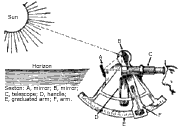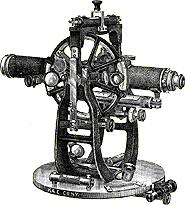Robert Patterson
 |
| The sextant was one of the various navigational tools Robert Patterson helped train Meriwether Lewis to use. Image © 2002 www.clipart.com. |
Schooling Meriwether Lewis on the tricks of navigation, surveying, astronomy, and mathematics was more than one man could handle. That's where Robert Patterson came in.
Patterson was one of Philadelphia's leading scientists at the time of Lewis' visit. His job was to continue the schooling that Andrew Ellicott had already begun in Lancaster. When Lewis arrived in May 1803, they got to work. Patterson also helped Lewis select a chronometer. It cost $250, the largest cost for any single item carried on the expedition.
Patterson persuaded Lewis to choose the sextant as the primary piece of survey equipment for the expedition. President Jefferson had recommended the theodolite but later deferred to Ellicott and Patterson. Those two considered the theodolite to be a sensitive instrument that would be too difficult to transport.
Once Lewis began his journey down the Ohio River, he met Patterson's son, William, in Wheeling, in what is now West Virginia. The young Patterson, a doctor, asked to accompany Lewis, but he was a no-show when it came time to leave.
< previous | next > | 




